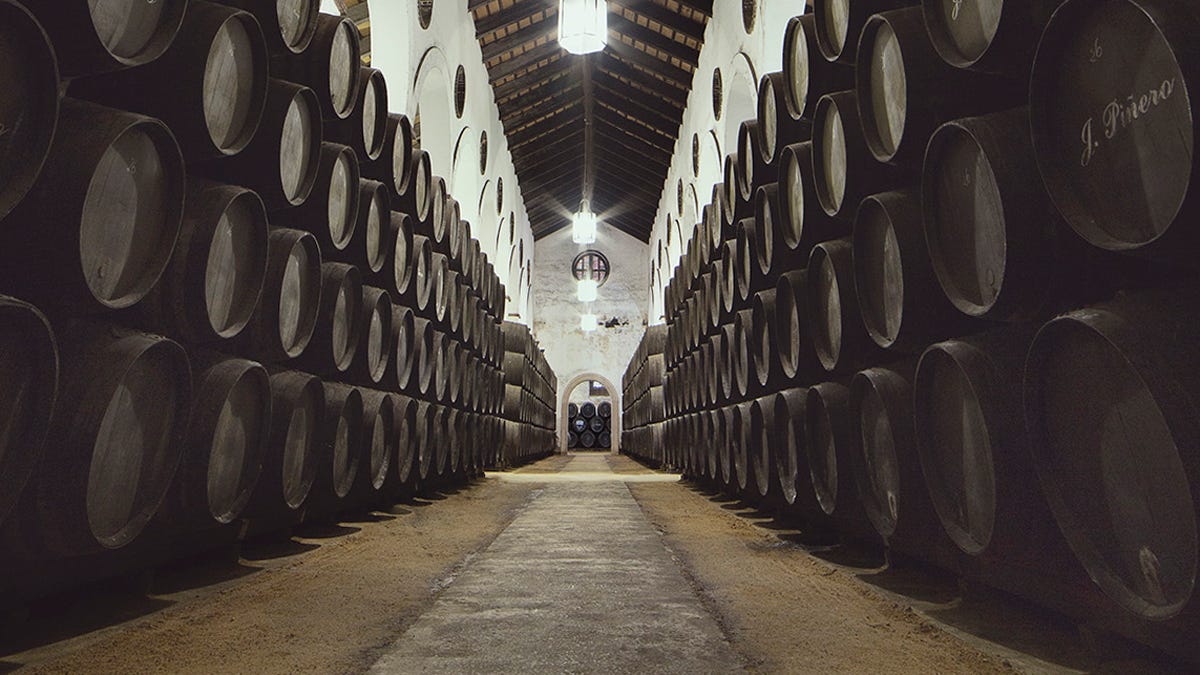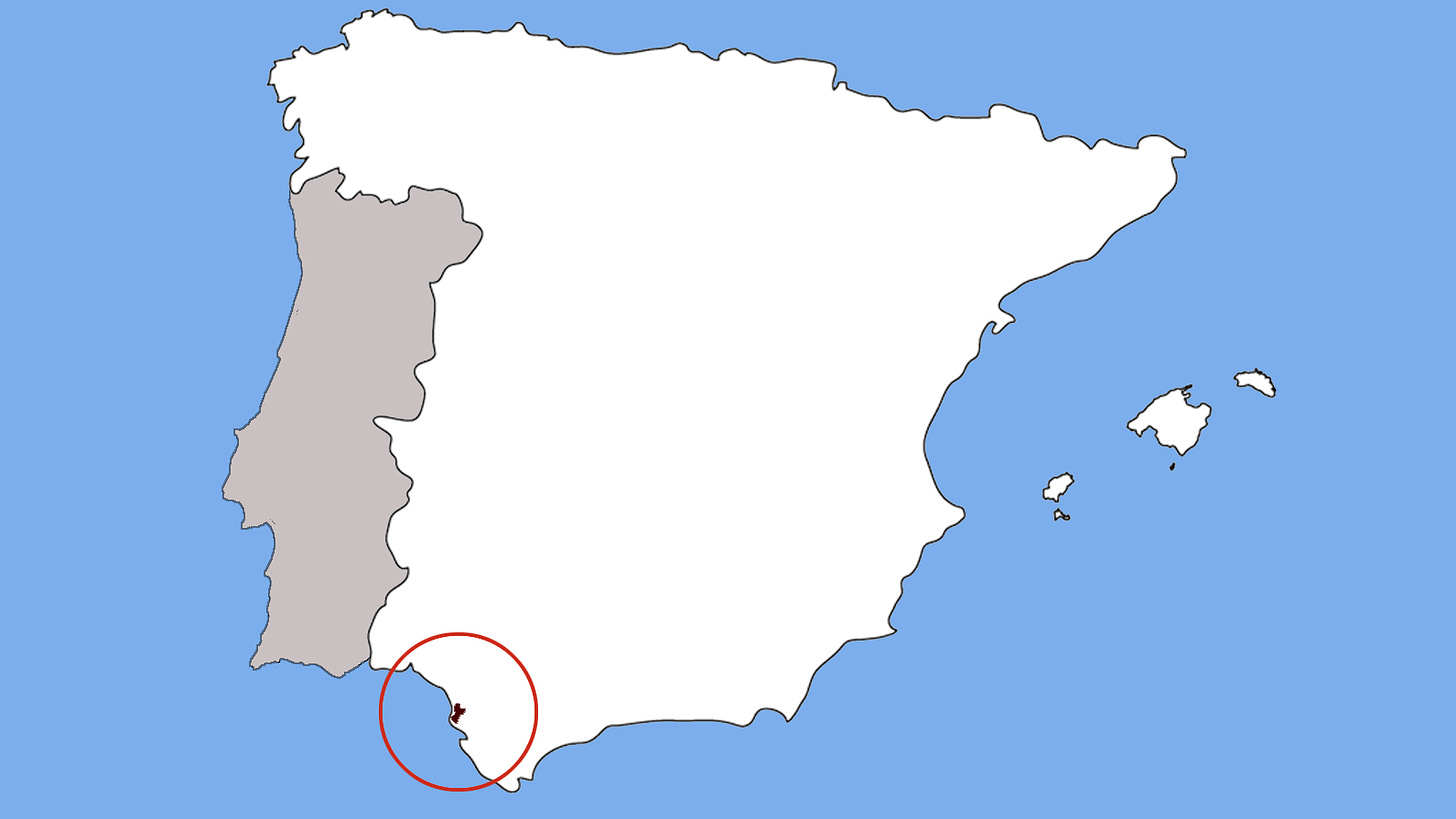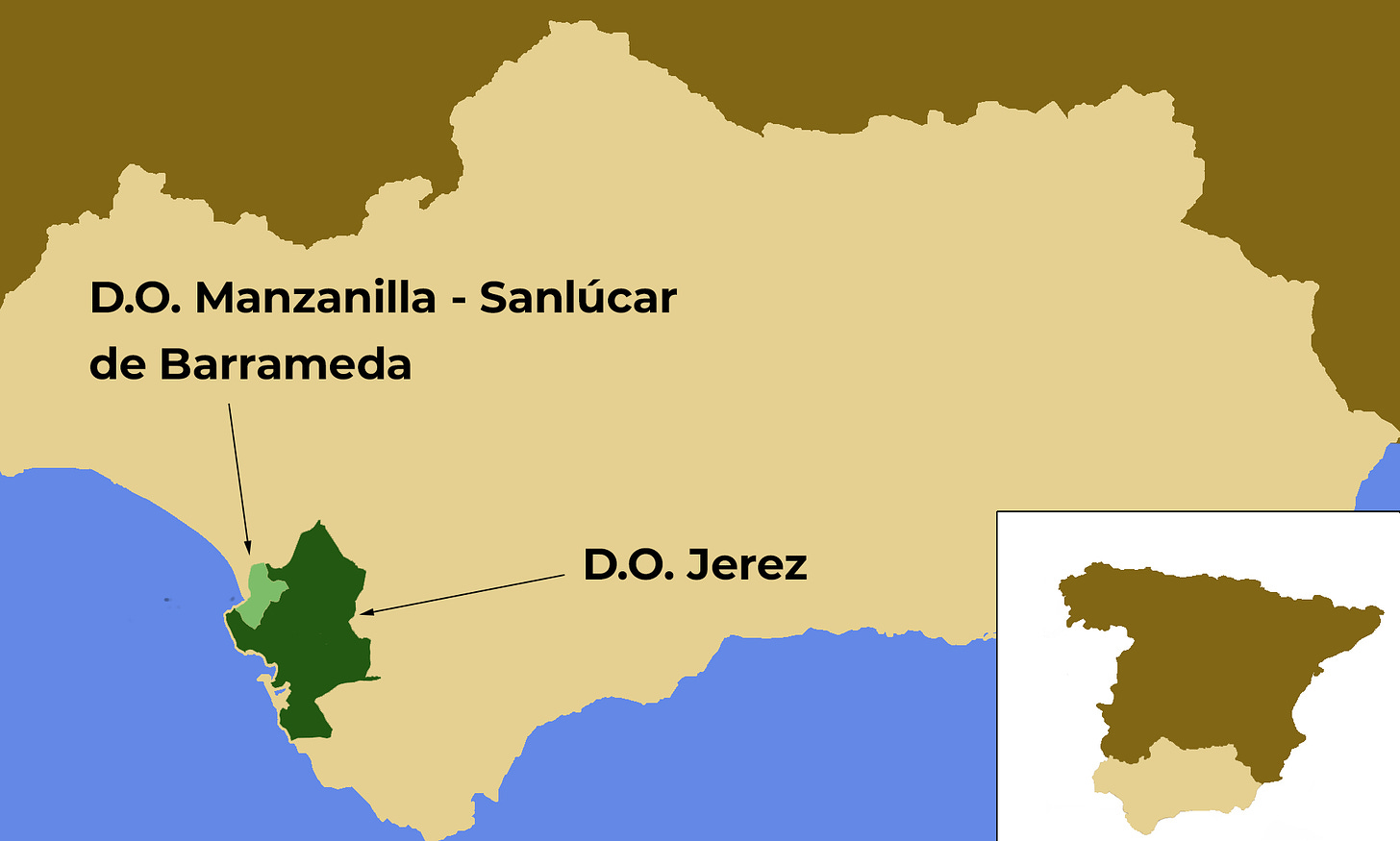DO Manzanilla - Sanlúcar de Barrameda
This article was originally published on our old website, Simply Spanish Wine.
Key Points
Grape varieties: Palomino Fino
Wineries: 24
About Manzanilla – Sanlúcar de Barrameda
Winemaking history and tradition in the Marco de Jerez stretches back centuries to the time of the Phoenicians. But the discovery of the New World in the 15th century boosted the fortunes of Sanlúcar de Barrameda and it became a key port for trade with the American continent, with wine from the region becoming a staple part of the ships’ crews diet.
Demand for the region’s wines grew enormously in the sixteenth and seventeenth centuries, and the first foreign investors arrived, particularly from the British Isles. By the end of the eighteenth century, producers were looking for new methods to ensure their wines were of consistently high quality, and this gave birth to the criaderas y solera system of ageing that we know today.
At around the same time, official documents in the town of Cadiz made the first mention of Manzanilla as a category of wine in its own right, and by the beginning of the nineteenth century, Barbadillo was exporting Manzanilla to the US.
In 1935, Spain’s first Denominación de Origen, D.O. Jerez-Xéres-Sherry y Manzanilla de Sanlúcar de Barrameda was created and then in 1964, in recognition of Manzanilla’s distinct profile, the separate DO Manzanilla – Sanlúcar de Barrameda was formed. Imitators were quick to jump on the bandwagon and a proliferation of Manzanillas from other places in Spain prompted the European Commission in 1996 to formally recognize Sanlúcar as the only true home of proper Manzanilla.
The geography of Manzanilla – Sanlúcar de Barrameda
If there is one characteristic which sets Manzanilla apart it is its geography. At Spain’s southern tip, sitting at the mouth of the Guadalquivir River looking out to the Atlantic with the flat expanse of the Doñana Natural Park behind it, Sanlúcar de Barrameda is a unique spot. Sun, sea, flat marshlands and the sea breezes all ensure that the wines quietly ageing in the town’s cellars have a personality all of their own.
The climate of Manzanilla – Sanlúcar de Barrameda
The combination of the river, the ocean and the marshland, coupled with plenty of sun 320 days of the year, makes for a unique sanluqueño micro-climate with mild temperatures and a higher relative humidity compared to the interior of the province of Jerez.
The grapes of Manzanilla – Sanlúcar de Barrameda
Palomino Fino – often just referred to as Palomino - is a white grape variety which originated in Andalucía and is most closely associated with Jerez where it covers about 95% of the total vineyard area and is the key grape used to make a whole range of wines, mainly fortified but some still wines too.
Still, dry wines made with Palomino Fino tend to be quite light, fresh and balanced. But the variety really comes into its own when it’s subjected to crianza biológica, or biological ageing in botas or butts under a veil of the famous flor, the white film of yeast cells native to the region of Jerez which floats on the surface of the wine. The flor stops air from getting to the Palomino wine and encourages a bewildering array of delicious aromas and flavours to develop. These vary depending on the wine style (Fino, Manzanilla, Oloroso, Palo Cortado etc) but can cover everything from saline and nutty notes, fresh dough, almonds, spice, leather, orange zest, dried fruits or tobacco.
Flor thrives in cooler, more humid climates (70% or above is ideal), which means that the flor you get by the sea in Sanlúcar de Barrameda, the home of manzanilla, is that much thicker than the flor you’ll find 25 kilometres inland in Jerez de la Frontera where fino hails from. That extra thickness means an even more robust barrier to any contact with oxygen and a slightly more vigorous flor which means less glycerol in the final wine, as the yeasts consume glycerol during the ageing process. As a result, manzanilla tends to be that much brighter and fresher, with slightly drier, saline notes and sometimes a touch of green apple, while fino is a bit broader on the palate and more ‘savoury’.








